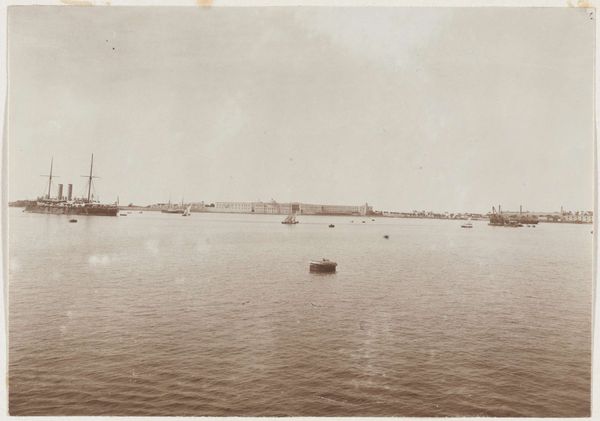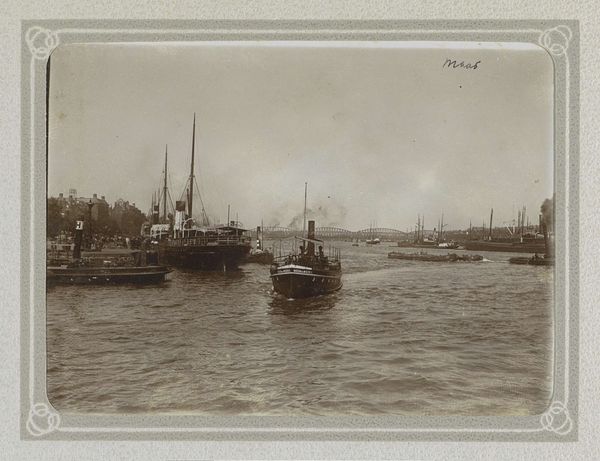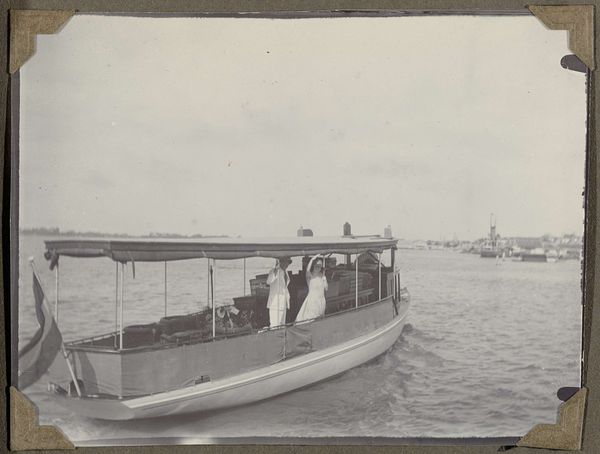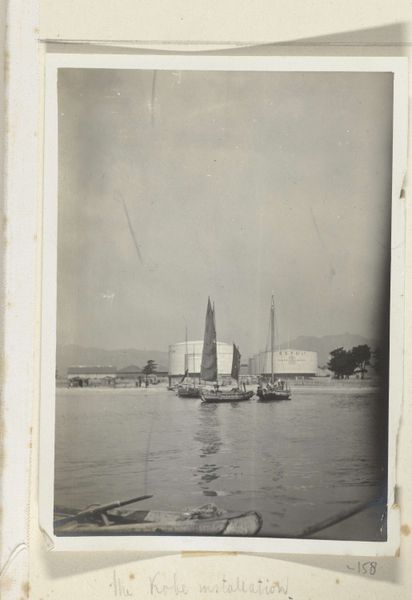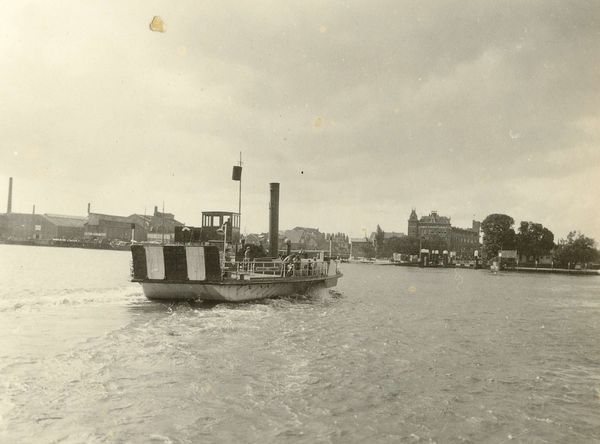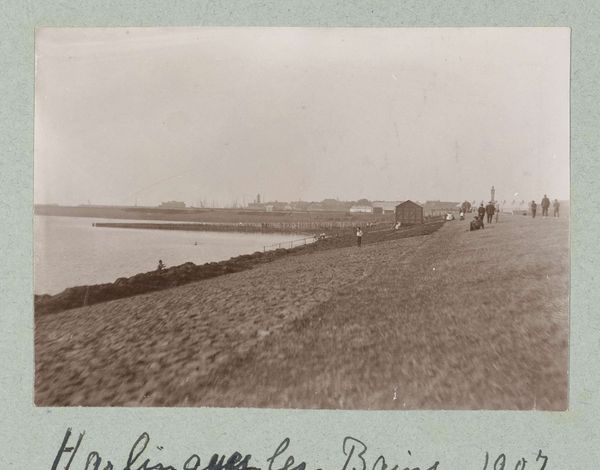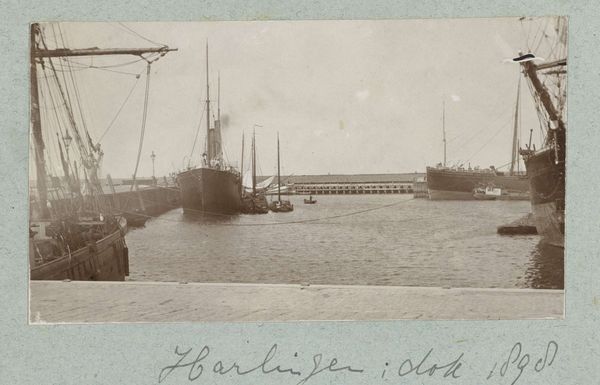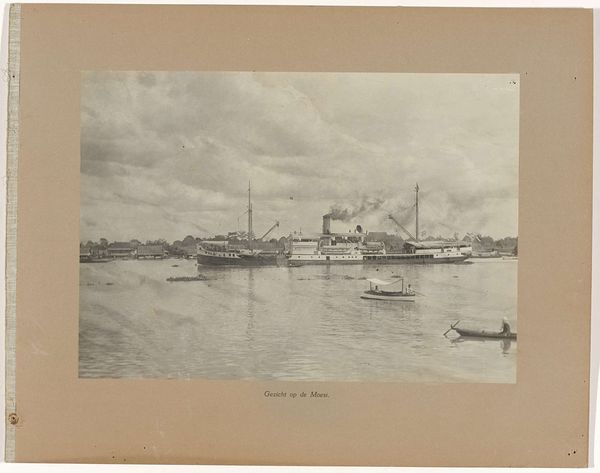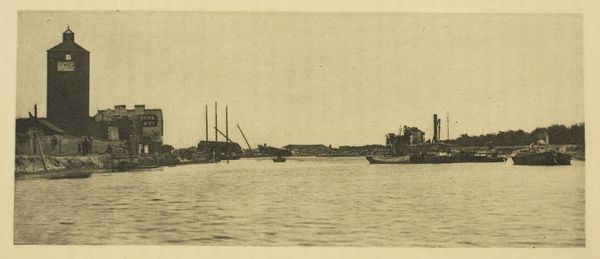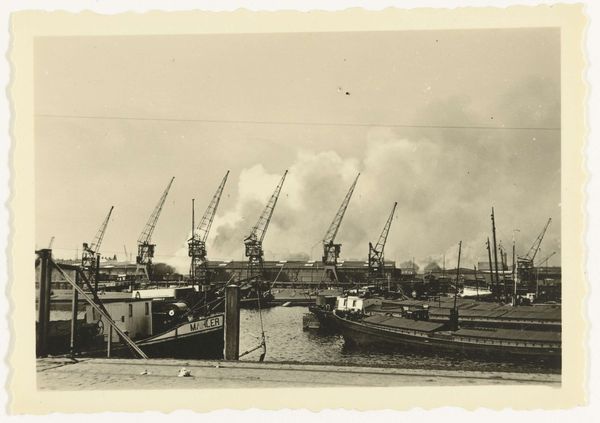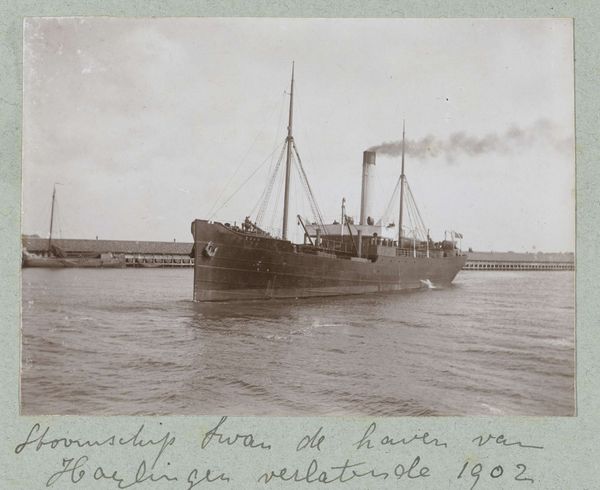
photography
#
pictorialism
#
landscape
#
photography
#
cityscape
Dimensions: height 78 mm, width 110 mm, height 242 mm, width 333 mm
Copyright: Rijks Museum: Open Domain
Curator: This photograph, “Stadsgezicht vanaf zee,” or “Cityscape from the Sea,” was captured by Frits Freerks Fontein Fz. in 1902. The style reminds us of Pictorialism, quite fitting to the period, right? Editor: It certainly has a melancholic feel. That tonal range, almost a monochrome… evokes a wistful distance. What kind of photographic process was typical then? Curator: We know that photography in this era demanded intense labor, from preparing emulsions to lengthy exposures. These constraints, in a way, shaped the aesthetic of pictorialism, where process and artistic intervention were central. Editor: That certainly feeds into its cultural context too. There's a fascination with the industrial blending with nature, visible here with that delicate waterline opposed to the cityscape. Do you think the location – seen “from the sea” – makes a statement? Curator: Fontein presents a fascinating juxtaposition: nature—water—set against human fabrication and habitation. It suggests that the city itself is a product of specific modes of labor, resource extraction and human intention. What industries sustained that city and how did it impact material lives? Editor: Good point. Its muted appearance downplays urban noise in favor of evoking stillness. Fontein is surely mindful of crafting public reception, shaping this portrayal for a discerning audience likely versed in romantic landscape paintings. Curator: Right! He uses photography here not for documenting per se, but crafting an idealized view, blending labor and the cultural ideas of urbanization. Editor: The soft focus further removes harsh details that would otherwise locate the viewer within a specific historical reality. What does Fontein communicate through blurring these social textures? Curator: I read the indistinct details and lack of resolution to suggest not one but many urban realities experienced in 1902. The beauty of photographic ambiguity leaves it to the viewer’s historical imagination to shape, to labor themselves in assigning meaning. Editor: Agreed. His perspective and methodology become fascinating markers. We appreciate his cityscape much differently after delving into the materiality and choices involved. Curator: A nice convergence point in our analyses! The politics, labor, and art, bound together as the meaning behind a seemingly serene moment.
Comments
No comments
Be the first to comment and join the conversation on the ultimate creative platform.
